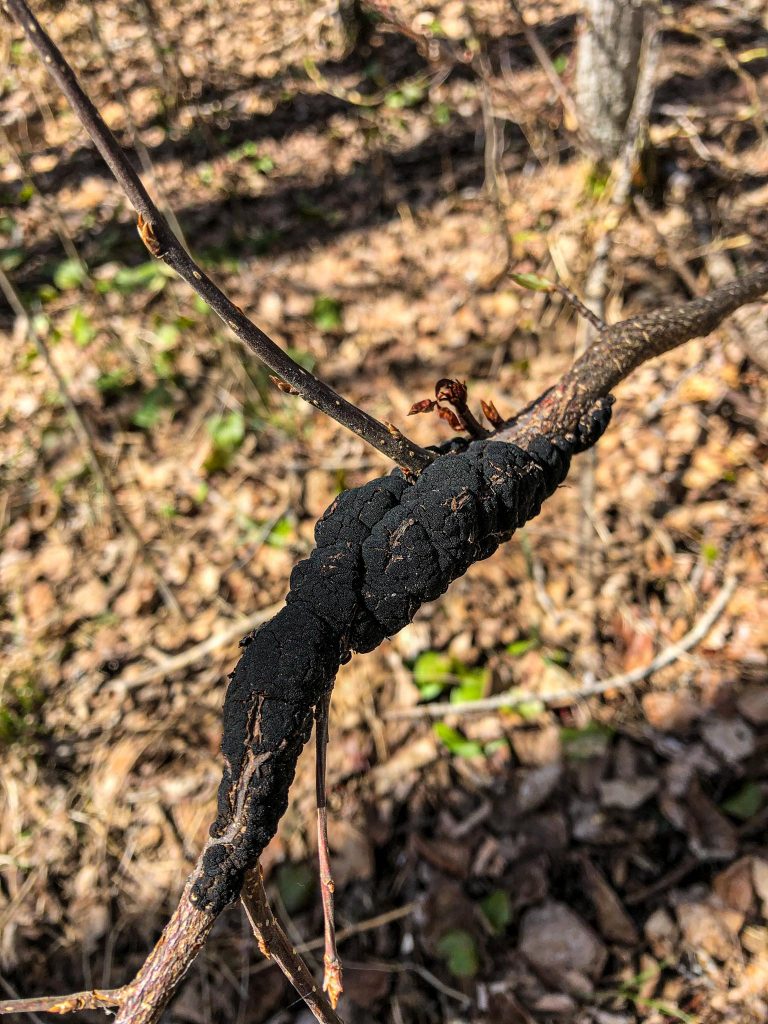
Yellowhead County’s Agricultural Services Department has received numerous calls from residents regarding black growths on residents’ fruit trees.
These tar-like black swellings are a sign of Black Knot and will distort and stunt any tree species within the Prunus genus. Examples of trees in this genus include Mayday, Shubert, Chokecherry, Pincherry, Plum, and Apricot trees.
Black Knot reduces the aesthetic value of affected trees and, if left long enough, may result in eventual death of the tree. The disease spreads in the spring, attacking new growth on branches. The spores released by the fungi can be carried by wind and splashing rain.
The only reliable method of controlling Black Knot is pruning.
Here’s how you can prune your trees properly to combat the disease:
- Only prune between November and March.
- Cleanly cut off at least 6-8 inches below the knot, better to prune back to a healthy collar, then leaving a stub.
- For knots on branches or trunks that can’t be removed, use a knife to cut away diseased tissue down to good wood and then ½ inch beyond the edge of the knot.
- Cleaning your equipment properly is another good way to prevent the spread, Pruning shears should be dipped in a 1% bleach/water solution between cuts and once you are finished pruning ensure you run your tools under water for 10 minutes and dry thoroughly.
- Treat pruned branches like hazardous waste, they can release spores for up to 4 months. Burn, bury, or wrap them in plastic and throw them in the trash. Do not compost.
If you need more information about pruning, please reach out to an arborist or Yellowhead County’s Agricultural Services Department at 1-800-814-3935 or 780-325-3782.

